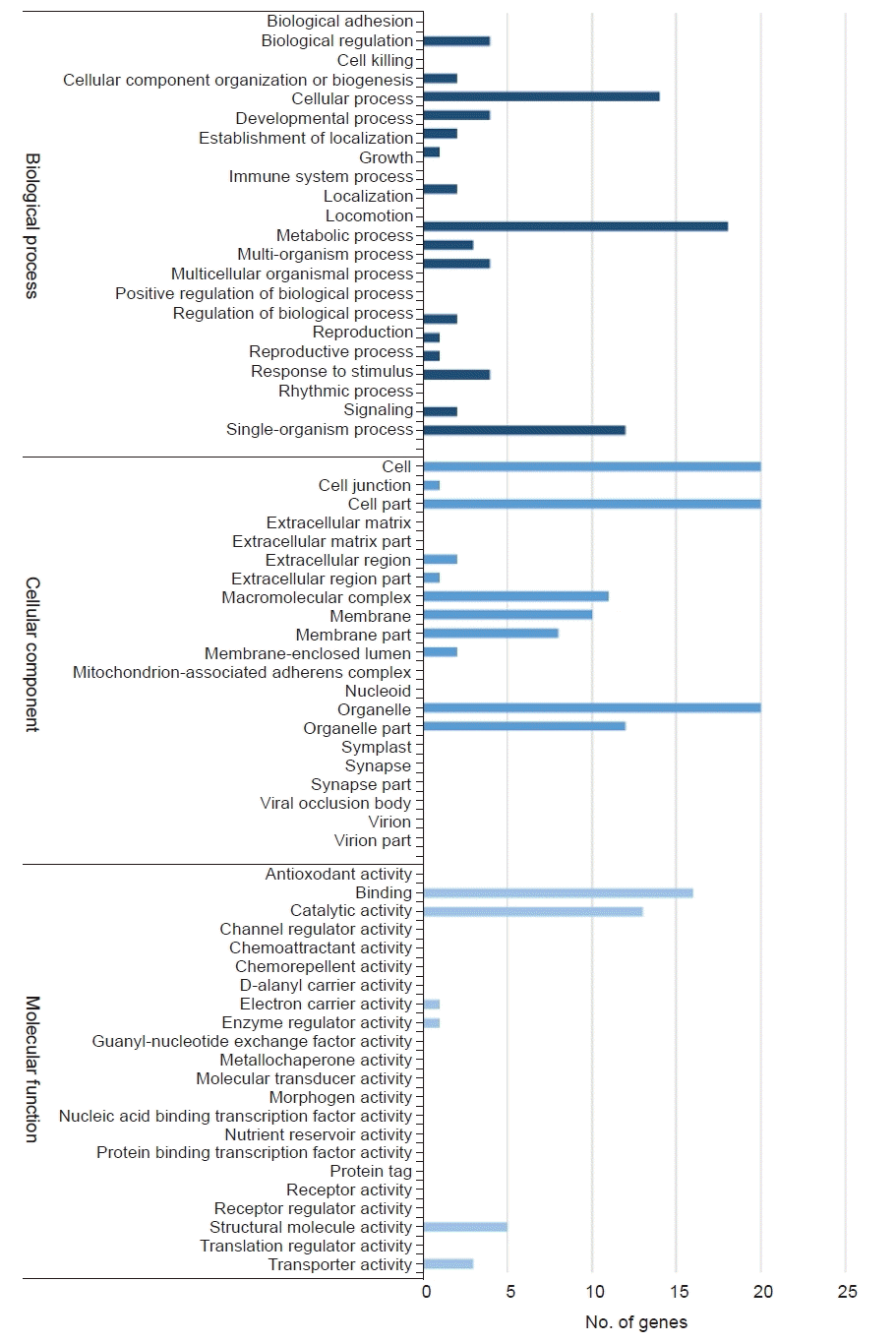1. Song JY, Kitamura S, Oh MJ, Kang HS, Lee JH, Tanaka SJ, et al. Pathogenicity of Miamiensis avidus (syn. Philasterides dicentrarchi), Pseudocohnilembus persalinus, Pseudocohnilembus hargisi and Uronema marinum (Ciliophora, Scuticociliatida). Dis Aquat Organ. 2009; 83:133–43.

2. Retallack H, Okihiro MS, Britton E, Sommeran SV, DeRisi JL. Metagenomic next-generation sequencing reveals Miamiensis avidus (Ciliophora: Scuticociliatida) in the 2017 epizootic of leopard sharks (Triakis semifasciata) in San Francisco Bay, California, USA. J Wildl Dis. 2019; 55:375–86.

3. Proto WR, Coombs GH, Mottram JC. Cell death in parasitic protozoa: regulated or incidental? Nat Rev Microbiol. 2013; 11:58–66.

4. Gechev TS, Hille J. Hydrogen peroxide as a signal controlling plant programmed cell death. J Cell Biol. 2005; 168:17–20.

5. Lee JH, Park JJ, Choi JH, Shin DH, Park KH. Anti-scuticociliate effects of aquatic hydrogen peroxide preparation in olive flounder Paralichthys olivaceus. J Fish Pathol. 2017; 30:107–14.
7. Crosbie PB, Munday BL. Environmental factors and chemical agents affecting the growth of the pathogenic marine ciliate Uronema nigricans. Dis Aquat Organ. 1999; 36:213–9.

8. Jee BY, Jo MR, Kim JW, Park MS. In vitro efficacy of formalin, hydrogen peroxide and copper sulfate on the scuticocilliate Uronema marinum at low salinity. J Fish Pathol. 2002; 15:111–5.
9. Whang I, Kang HS, Lee J. Identification of scuticociliates (Pseudocohnilembus persalinus, P. longisetus, Uronema marinum and Miamiensis avidus) based on the cox1 sequence. Parasitol Int. 2013; 62:7–13.

10. Gebler GF. Phylogenetic relationship among polymorphic Oligohymenophorean ciliates, with gene expression in life-history stages of Miamiensis avidus (Ciliophora, Oligohymenophorea) [dissertation]. College Park: University of Maryland;2007.
11. Sogame Y, Kojima K, Takeshita T, Kinoshita E, Matsuoka T. Identification of differentially expressed water-insoluble proteins in the encystment process of Colpoda cucullus by two-dimensional electrophoresis and LC-MS/MS analysis. J Eukaryot Microbiol. 2014; 61:51–60.

12. Villalobo E, Moch C, Perasso R, Baroin-Tourancheau A. Searching for excystment-regulated genes in Sterkiella histriomuscorum (Ciliophora, Oxytrichidae): a mRNA differential display analysis of gene expression in excysting cells. J Eukaryot Microbiol. 2001; 48:382–90.

13. Matsuoka T. Early signaling pathways mediating dormant cyst formation in terrestrial unicellular eukaryote Colpoda. FEMS Microbiol Lett. 2021; 368:fnab019.
14. Plattner H, Klauke N. Calcium in ciliated protozoa: sources, regulation, and calcium-regulated cell functions. Int Rev Cytol. 2001; 201:115–208.

15. Shindo T, Van der Hoorn RA. Papain-like cysteine proteases: key players at molecular battlefields employed by both plants and their invaders. Mol Plant Pathol. 2008; 9:119–25.

16. Misas-Villamil JC, van der Hoorn RA, Doehlemann G. Papain-like cysteine proteases as hubs in plant immunity. New Phytol. 2016; 212:902–7.

17. Gannavaram S, Debrabant A. Programmed cell death in Leishmania: biochemical evidence and role in parasite infectivity. Front Cell Infect Microbiol. 2012; 2:95.

18. Welburn SC, Macleod E, Figarella K, Duzensko M. Programmed cell death in African trypanosomes. Parasitology. 2006; 132 Suppl:S7–18.

19. Stowe DF, Camara AK. Mitochondrial reactive oxygen species production in excitable cells: modulators of mitochondrial and cell function. Antioxid Redox Signal. 2009; 11:1373–414.

20. Wang C, Youle RJ. The role of mitochondria in apoptosis*. Annu Rev Genet. 2009; 43:95–118.

21. Ghosh AS, Dutta S, Raha S. Hydrogen peroxide-induced apoptosis-like cell death in Entamoeba histolytica. Parasitol Int. 2010; 59:166–72.

22. Kundu-Michalik S, Bisotti MA, Lipsius E, Bauche A, Kruppa A, Klokow T, et al. Nucleolar binding sequences of the ribosomal protein S6e family reside in evolutionary highly conserved peptide clusters. Mol Biol Evol. 2008; 25:580–90.





 PDF
PDF Citation
Citation Print
Print




 XML Download
XML Download